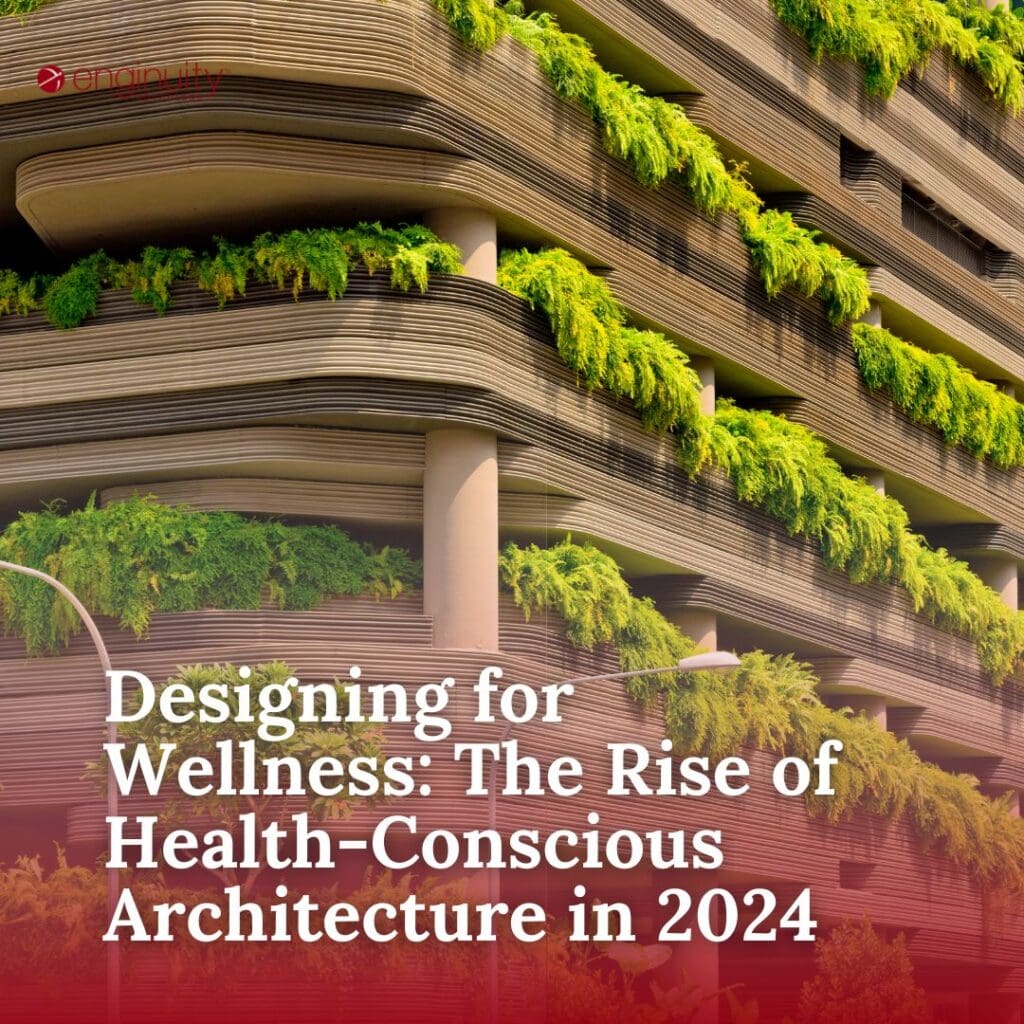Designing for Wellness: The Rise of Health-Conscious Architecture in 2024

In the realm of architecture, the focus is increasingly shifting towards designs that prioritize human well-being, both mental and physical. The key lies in optimizing environmental factors such as temperature and humidity in a way that supports not just the structure, but the health of its inhabitants.
This emergent trend isn’t merely a fad but a vital response to the growing awareness of how our environments influence well-being. The wellness real estate market is set to grow by USD 575.9 billion from 2022 to 2027 progressing at a CAGR of 21.77% during the forecast period. This movement is reshaping the way we think about spaces, creating a unique niche that blends aesthetics, functionality, and health.
Understanding Health-Conscious Architecture
Health-conscious architecture transcends traditional design by prioritizing aspects that positively affect the occupants’ physical and mental health. It’s a holistic approach, integrating environmental sustainability with human-centric designs. This architectural philosophy entails more than creating visually appealing structures; it’s about fostering environments that enhance the quality of life.
Creating environments that support health through controlled ventilation and humidity is essential for maintaining air quality. This involves comprehensive solutions that combine filtration, UV technologies, and smart building management strategies.
Principles of Wellness-Focused Design
- Maximizing Natural Elements: Incorporating natural light and ventilation stands as a fundamental aspect. Studies highlight the role of natural light in boosting mood and productivity, while proper ventilation significantly improves air quality.
- Embracing Biophilic Design: This approach draws on elements of nature, integrating them into architectural designs to reduce stress and enhance creativity.
- Choosing Health-Promoting Materials: The selection of sustainable, non-toxic materials is crucial in wellness architecture. This choice directly impacts indoor air quality and, subsequently, the health of occupants.
- Encouraging Physical Activity: Active design is a growing trend. It involves creating spaces that naturally encourage movement, like inviting staircases and ergonomic workspaces.
A well-designed space can have a substantial impact on our daily experience. Poorly ventilated spaces, for example, can lead to fatigue and decreased productivity. Conversely, buildings designed with wellness in mind can boost our creativity, focus, and overall health.
Mental Well-being and Spatial Design
The influence of architectural design on mental health is gaining acknowledgment. According to the American Psychological Association, environmental factors, including the spaces where we live and work, are significant contributors to mental wellness. Thoughtful architectural designs can create environments that alleviate stress, encourage social interaction, and enhance overall mental well-being.
The goal of modern, health-conscious architecture is to improve life in all building types. This means optimizing buildings for health by considering various factors in the built environment that influence human health and productivity.
Sustainability: A Core Component
The intersection of sustainability with wellness in architecture is more than a coincidence; it’s a necessity. Eco-friendly designs align with health-conscious principles, offering benefits to both the environment and the inhabitants. Energy-efficient systems, water conservation techniques, and the use of renewable resources are integral to this sustainable wellness movement.
Inclusivity in Design
Inclusive design is another critical element of wellness architecture. Creating spaces accessible and comfortable for a diverse population underscores the importance of universal design principles. This approach ensures that buildings are not just healthy but also universally accessible, catering to the needs of all individuals regardless of age, ability, or background.
Design elements like ventilation, CO2 levels, and the reduction of VOCs are crucial for cognitive functioning. Workers in green-certified buildings report better cognitive function and overall well-being, attributed to improved air quality and optimal thermal conditions.
A New Avenue for Aspiring Architects
For those seeking a career in architecture, this shift towards wellness-oriented designs offers a realm of opportunities. The industry is calling for innovative thinkers who can blend these principles into their creations. As you embrace these concepts, you not only enhance your professional value but also contribute positively to societal health.
A Future Focused on Wellness
As we delve into the profound impact of architecture on health and wellness, it’s clear that this field is not just about constructing buildings; it’s about shaping environments that enhance life. This new frontier in architecture offers tremendous opportunities for innovation, creativity, and meaningful impact.
Are you an aspiring architect ready to dive into the world of health-conscious design? At Enginuity Advantage, we specialize in connecting talented architects like you with forward-thinking companies that are leading the charge in wellness-oriented architecture. We understand the nuances of this evolving field and are committed to helping you find opportunities where you can apply your skills, creativity, and passion for making a tangible difference.
Join us in shaping the future of architecture. Explore career opportunities that align with your vision for a healthier, more sustainable world. Contact Enginuity Advantage today and let’s build a healthier future together, one innovative design at a time.
Unlock Dream Careers & Elite Talent: Just One Click Away!


